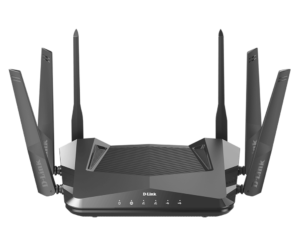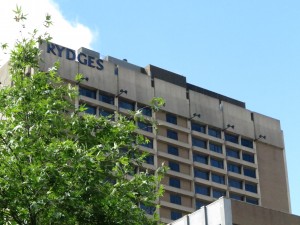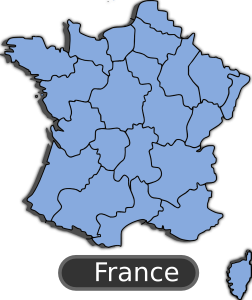Maintaining a competitive Internet-service landscape
 An issue that will have to be kept in governments’ minds is the assurance of a high-quality value-for-money Internet service that is affordable for all people in all areas of the country.
An issue that will have to be kept in governments’ minds is the assurance of a high-quality value-for-money Internet service that is affordable for all people in all areas of the country.
A requirement to maintain a competitive Internet-service landscape may not be needed if the incumbent infrastructure provider is providing an Internet service that represents proper value-for-money for everyone. This may hold true for a country like New Zealand with its Chorus FTTP infrastructure network which was one of those infrastructure networks that was split away from the incumbent telecommunications service.
This includes a high-throughput service of current expectations, access to a decent-standard Internet service by people who live in rural areas as well as access at an affordable price for low-income and marginalised communities and the non-profit or start-up / small-business sector. Such services may be assisted through programs like “solidarity tariffs” for low-income people or a universal-service obligation fund that is used to subsidise rural setups.
The competitive market
There are different approaches to assuring a competitive Internet-service landscape especially at the infrastructure level.
France implements a requirement to have a minimum number of infrastructure-level providers in larger towns and cities. In addition, they assess all last-mile Internet-provision technologies for provision of Internet service in a competitive manner at the infrastructure level.
Or countries like the UK and Germany encourage and give blessing to independent operators that provide their own fibre-to-the-premises or fibre-to-the-building Internet-service infrastructure. In a lot of cases, such services are offered before the dominant infrastructure provider or ISP offers infrastructure or retail Internet service in the area. Or these networks are offered to an established area in competition to the area’s dominant provider. Here, such operators cover a particular village, town or city; or part thereof and offer retail Internet service that is above average for its class. They are also encouraged to set up presence in multiple areas in order to give more settlements decent Internet service or increase competition in other settlements.
In some cases like with some towns and cities within the USA, the local or regional government provides infrastructure-level or retail Internet service to the area’s citizens. This is typically as an extension to the local government entity establishing its own Internet infrastructure for its own needs and making further value out of it. But this approach has caused friction with the dominant ISPs in those areas due to the provision of competing Internet service in an area where they control the Internet-service market.
These independent infrastructure providers could be required by some jurisdictions to offer wholesale Internet access if they become large enough to do so. This can be deemed by their appearance in a minimum number of cities, them passing a minimum number of premises or acquiring a minimum number of subscribing customers.
There can also be a requirement for an infrastructure operator to accept being “built over” by a competitor i.e. having a competing operator build their infrastructure in that operator’s territory, able to serve that operator’s customers. Such a requirement can be brought about typically by metrics similar to required wholesale-service provision like number of premises passed or subscribing customers. Or if the population centre has a minimum population size, minimum area or minimum number of homes and businesses, the infrastructure provider has to accept being built over,
In the same context, there will be a question about whether a retail ISP would be able to use multiple wholesale providers especially within the same population centre. This may come in to its own where different wholesale providers offer different wholesale-service standards like higher throughput, symmetrical throughput or business-grade guaranteed service quality. Similarly it could be about extending reach to communities not served by the wholesale provider they are primarily contracted with.
Social tariffs and plans
Another issue that is cropping up is the provision of affordable use plans for certain user classes. This was a practice often done in social democracies where the incumbent telephony-service provider, typically a government entity that was part of the post office, provided affordable basic residential telephony service for poorer communities or provided affordable business telephony service for community organisations.
One user class this would be for are people who are living below the poverty line. Here, disadvantaged communities not having access to Internet service they can afford makes it hard for them to participate in education, employment / entrepreneurship or society, or complete everyday transactions. It is also seen as a factor that exacerbates the “digital divide” between those who can use online services and those who can’t.
This user class would be identified by having access to income-based welfare benefits including concession or subsidised-healthcare cards. Some jurisdictions may even provide particular income-independent concession programs for at-risk people groups like senior citizens or Indigenous and refugee communities. In addition, social tariffs could be offered to people who live in social or affordable / rent-controlled housing typically offered to people who are on limited means.
Some ISPs even use social tariffs as part of their efforts to remove the digital divide, along with subsidised computer equipment for the home or facilitating / sponsoring computer-literacy education programs.
Another user class would be the charitable and non-profit sector who would need Internet service to fulfil their functions. Such organisations may be identified through registration in business registers as being “non-profit” or “charity”, including registration in “charity-commission” registers. As well, some service providers may also factor in organisational revenue or profits. Similarly, start-ups and small businesses could be provided these tariffs such as through business-assistance / incubator programs or rent-controlled business premises that are offered to these businesses.
But there would be the issue of providing an Internet service that satisfies current expectations for standard services when providing social tariffs to these customer groups. That means something that you can run your life or business with reasonably.good Internet service without paying too much for that service.
The existence of social tariffs and plans and the kind of services offered under these plans could be an indication of how competitive the Internet service sector is and whether it is working in a customer-centric manner. But these social tariffs could be supported through approaches like a universal-service-obligation fund, public-sector funding or voluntary-sector funding.
Assuring lively competition
But how can a lively competitive Internet service market be assured? This question is more so where there is that dominant risk of market concentration for wholesale or retail Internet service.
Such concentration can lead towards monopolistic or cartel-like behaviour that is hostile to customers or suppliers such as price-gouging or onerous terms and conditions for the provision of service. As well, this behaviour can facilitate denial of service to communities not seen as being valuable such as rural communities or neighbourhoods of social disadvantage.
Here, governments would need to take a whole-of-government approach to work against market concentration at the infrastructure or retail level. This would involve action by the telecommunications regulators as well as competition-and-consumer watchdogs and may also involve properly-enforced antitrust legislation and regulation. As well, regional and local governments would have to work in a manner to assure lively competition for Internet services in their area when it comes to things like the capacity to regulate telecommunications infrastructure or planning, access to the highways for infrastructure installation, or planning regulation for new developments.
It should include the ability to reject proposed corporate mergers or force the break-up of larger dominant companies. Or it could be about encouraging competitors to set up shop in markets of a significant size that are dominated by a monopoly or cartel.
Conclusion
To assure common access to Internet service that befits current expectations, there needs to be a lively competitive market for this kind of service if the incumbent ISP or infrastructure provider doesn’t provide this kind of service everywhere at affordable prices.





